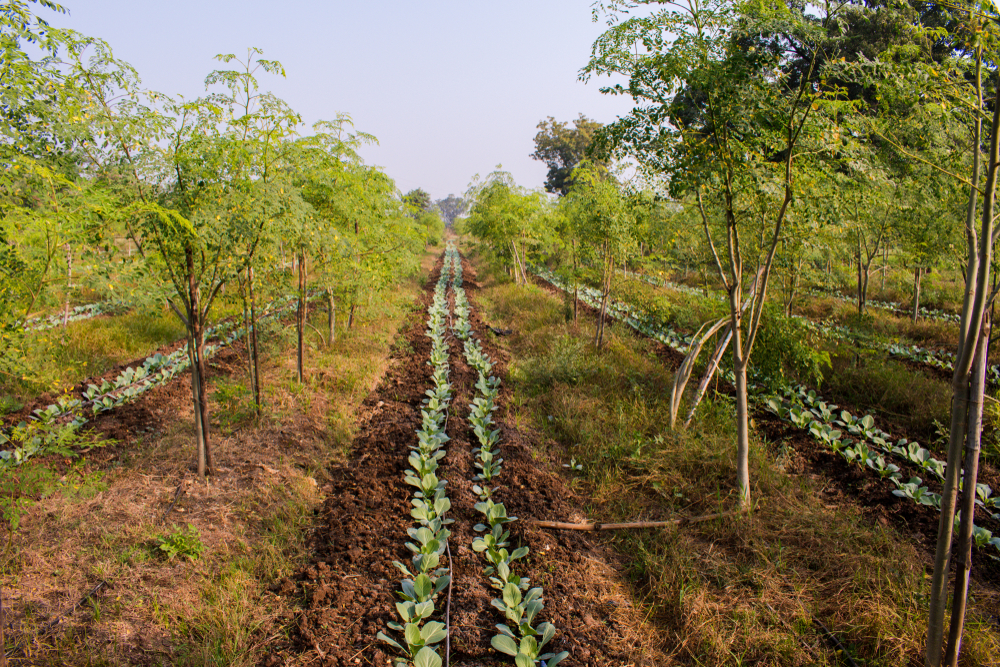A new study supports the practice of cultivating more than one crop in a field at a time, moving away from a monocrop model.

Monocropping—or growing acres and acres of one plant species—is a common agricultural practice, particularly in the US. But it can lead to increased need for fertilizers and a lack of biodiversity within fields. Often, species of crops such as wheat or soybeans are bred specifically to thrive in solo growing settings.
In a new study conducted by a research team at Agroscope, the Swiss Confederation’s Institute for Agricultural Research, researchers aimed to look into just how those crops would react when forced to share their space. The study found that after just two years of intercropping—or growing two or more crops in close proximity—even crops that are bred to grow using monocropping techniques can learn to cooperate while sharing plots with other plant species.
The findings are a win for sustainable farming, as the practice of intercropping more closely resembles the growing styles of wild plants. Growing multiple species in the same plot allows farmers to take advantage of natural complimentary features of different crops, and it can leave soil less nutrient-depleted and minimize the need for fertilizers—making it a more environmentally friendly growing option.
To conduct the experiment, researchers planted small plots with wheat, oat, lentil, flax, camelina and coriander species. The plots had different combinations of crops, including 13 plots with a combination of two plant species, four with a mix of four species and some control planters and plots housing only one crop—some plots were treated with fertilizer and others were not.
The team repeated the process for three consecutive years, using seeds gathered from each crop the year prior. By doing so, researchers were able to record the generational changes of each plant when growing in different crop systems. In the study’s last year, they did final tests to measure the crops’ productivity.
While the crops adapted quickly to growing side-by-side with other crops, researchers noted that the growing systems did not increase final crop yields without fertilizers. In fertilized pots, however, the intercropping growing technique did show an increased yield.
Due to the short-term nature of the study, scientists say the crop species didn’t show signs of any genetic trait changes. However, longer studies of the same nature in the future may “observe more adaptations caused by genetic mutations or genetic recombination—the rearrangement of plant DNA sequences,” according to the study. The researchers predict that long-term adaptation of the crops could lead to traits that further optimize cooperation between species grown in close proximity.
Christian Schöb, head of the Agricultural Ecology Group and senior author of the study, says the results show promise for a future of more intercropping. “Our findings have important implications for the shift to more diversified agriculture,” he wrote. “They suggest breeding plants to grow in mixed-species plots may further improve yields and reduce the need for fertilizer and other harmful practices.”
How to harvest intercropped plants efficiently, ie by tractor pulled harvest machine? Crops will mature at different rates, requiring repeat visits to the same fields. The article could be improved by acknowledging this challenge, that must be addressed in order to scale up any kind of intercropping.